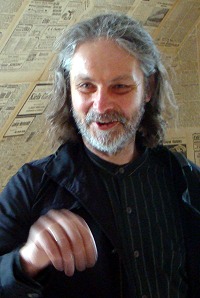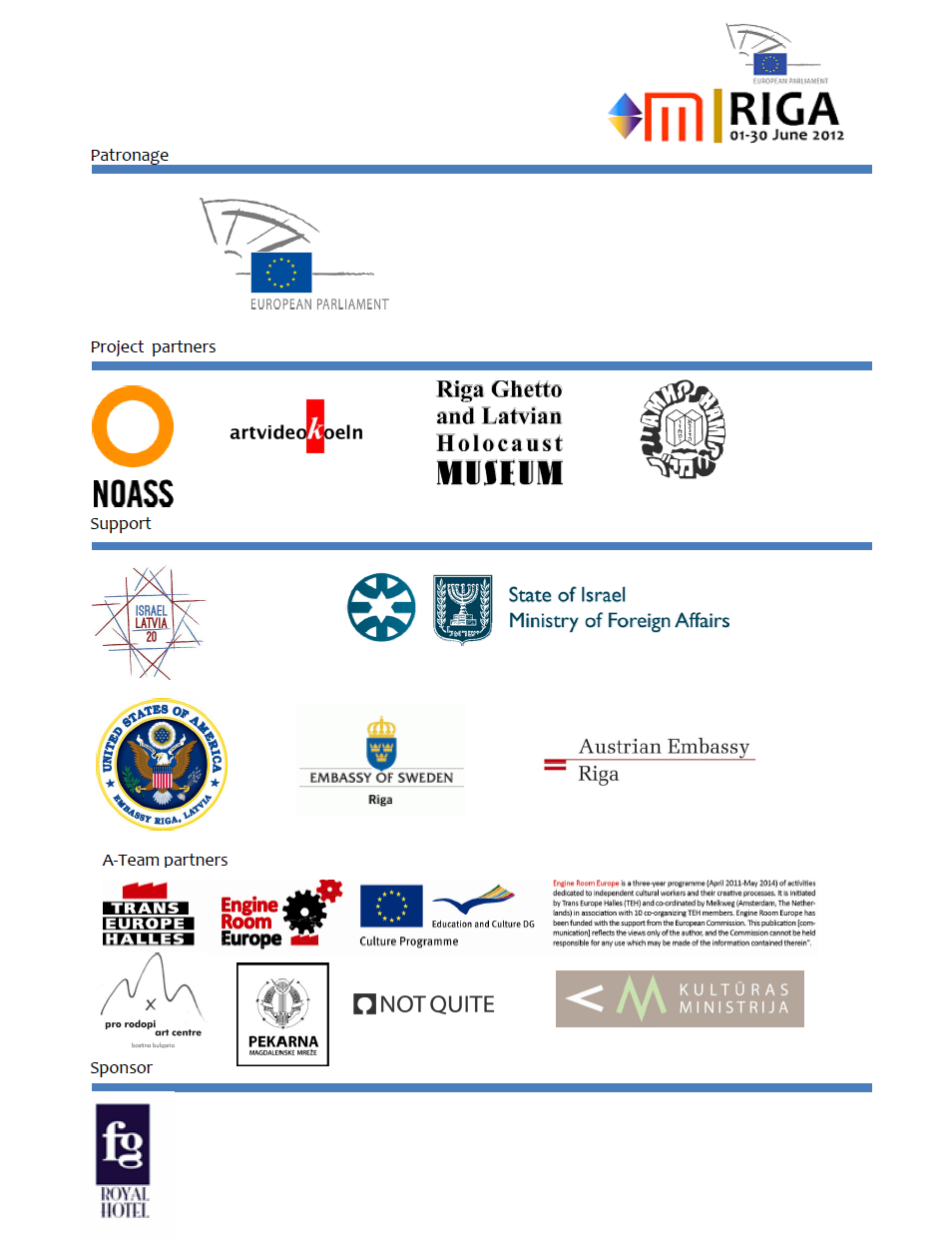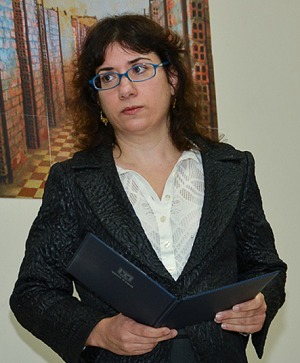 My primary thanks go to the Israeli Ambassador in the Baltic countries, Her Excellency Ms. Hagit Ben Yaakov (left). Without her personal engagement in Riga 2012 und Vilnius 2013, the projects wouldn’t have been realised, at all.
My primary thanks go to the Israeli Ambassador in the Baltic countries, Her Excellency Ms. Hagit Ben Yaakov (left). Without her personal engagement in Riga 2012 und Vilnius 2013, the projects wouldn’t have been realised, at all.
My sincere thanks go to NOASS and the artists residency “A-Team Artists for Change”, particularly to Dzintarz Zilgalvis (left), chairman of NOASS, who, himself an artist, took the risk in realising this extraordinary experimental project, and , of course to Alise, Kate & Zanda (below) – the good souls behind NOASS 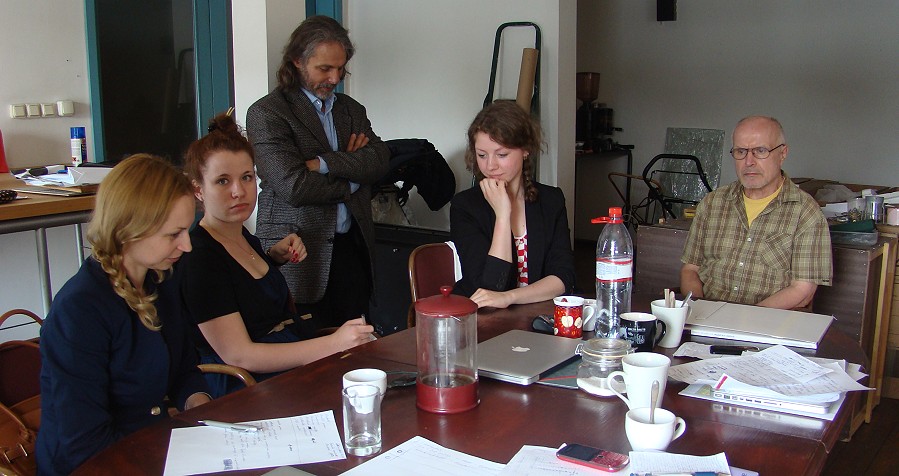
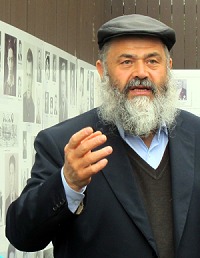
.
In this way, another particular thank go to Rabbi Menachem Barkahan (right), Chairman of Riga Ghetto and Latvian Holocaust Museum, whose was, at first very skeptical about “A Virtual Memorial Riga 2012, but his good heart gave him the good advice to dare the partnership in realising the project in Riga.
Thanks also to all instances which were supporting the attending artists, and make the success of the artists
meeting possible.
So, finally thanks to all artists, who made “A Virtual Memorial Riga 2012” possible only.
Thanks to all!!
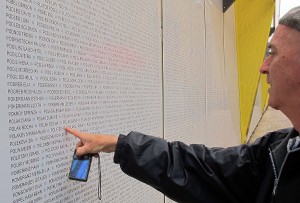
One artist was standing in the focus – Doron Polak – since Riga is the home of his ancestors, and visiting RIGA for the first time was being confronted with the history of his family and the diary of his father written during the Riga Ghetto. The Ghetto and the connected massacres did not only become vivid before his very eyes, but this life story, like also all unknown life stories ending in Riga during the Holocaust, became part of “A Virtual Memorial Riga 2012, and in this way the victims, whether killed or surviving, will never be forgotten. So thanks to Doron for sharing this father’s story.
A REVIEW
Impressions of a visit to Riga – June 2012
by Doron Polak
As a result of an invitation from the artist Wilfried Agricola de Cologne who initiated the Holocaust Film Festival, to come to Riga and attend a special conference on this topic, the photographer Eitan Vitkon and myself arrived in the city. For me, this was a unique chance to return to Riga, the city where my father was born and spent the war – the city where he lost part of his family.
First, I must say that the initiative to continue to work towards an artistic presence that commemorates this darkest period in human history, is of utmost importance. It is significant that the Holocaust Museum, the Shamir Organization, the NOASS Gallery and the embassies, enabled the Holocaust Film Festival to combine forces with the conference and that they found it suitable to support artists and creators from around the world in exhibiting their work dealing with this topic.
The inclusion of young contemporary artists contributed to finding a visual creative expression in photography, painting and video art – a representation of real, honest, intensive and current work dealing with the Holocaust. Each participant presented in his or her own artistic language, painful and personal interpretations of this topic. In addition, this was an exciting meeting between artists, each with their own real and personal story that influenced them – until deciding to deal with the subject of the Holocaust. It is important to remember that actually creating around the subject of the Holocaust has aspects that are relevant for today, in addition to those that focus again and again on what happened. Regrettably, the topic of control, the journeys of death and humiliation, the destruction of nations and oppression of peoples, are still day to day topics that can be found in different parts of the world. The advancement and development of culture has not been able to stop the inherent catastrophe in man’s behavior towards fellow man.
The meeting of artist in the NOASS Gallery in Riga around the topic of art dealing with the Holocaust, presented a series of formidable achievements that are an enlightened example of high-quality creativity connected to every-day realities whose educational goals are no less important or evident than their artistic ones. The mere holding of such a meeting in the place where the Riga Ghetto used to stand while allowing to visit the sites, especially the Holocaust Museum – the place that is today reconstructing that period – this alone created a unique and stunning experience. For me personally, as I said, it was the experience of a lifetime to recognise the names of my grandmother, uncle and most of his family that perished here, on the plaque of names of the Holocaust victims of Riga.
During the meeting, the artist Eitan Vitkon and myself had the chance to participate in three creative areas. The first was to present a very emotional exhibition of photographs in the NOASS Gallery that summarized an ongoing process of examining and coming to terms with memories of the Holocaust. My project is concerned with real feelings towards memories and the reaction of the body itself to these memories. I have been lucky to be able to work with such a special and talented artist as EitanVitkon, who was able to translate our intimate and border-less meetings from the studio in Israel, to such an empathetic and emotional series of photographs. The project did not deal with the image of the Holocaust survivor. It was aimed at showing the day-to-day ways that a second-generation, son of a survivor, actually deals with this topic – an artistic creation that is inspired and is related to the horrible trauma of life every moment of the day. It was especially emotional to see the reaction of the crowd to the exhibition that was shown together with artistic videos dealing with this topic playing continuously in a loop.
The second project was a piece of live performance art that took place in the gallery space during the opening of the conference. It was important for me to bring the the daily, current moments of life and so I used local newspapers in combination with some I brought from Israel. In addition, I used a real prayer shawl – a Talit – on which I attached family photographs. At the beginning of the performance I asked the audience to write their ID number on white sterile shirts, which I combined into the performance itself. Each member of the audience personally participated with his or her ID number – which hinted at the fact that this colossal tragedy can happen to each and everyone of us today. The warm response and tears in the audience’s eyes was for me the most suitable reaction I could ever hope for.
The third work allowed me to conduct a live performance in the Rumbula forest where tens of thousands of people were buried alive, which was photographed and documented by the attending artists. This stunning piece of work allowed for the live physical collaboration with some of the artists participating in the meeting and was an experience I will never forget. Creating here and now, in a place of real feelings towards what happened, turned into a single, photographed moment that managed to take the deep spiritual power of the creative process to other places.
The journey and meeting that was initiated by Wilfried Agricola de Cologne in Riga was for me an example of a unique project whose artistic qualities are connected to and accompany life itself, and are an example of a project with meaningful educational and historical achievements. The personal experience becomes a model for dealing with the Holocaust among second and third generation survivors and its cultural power is used as a tool for expressing memories of this terrible traumatic event in a strong, dramatic visual way that will never be forgotten.
Doron Polak, artist
Israel, 2012
A Virtual Memorial Riga 2012
is a media art project created, developed and coordinated by Wilfried Agricola de Cologne
copyright © 2012 by Wilfried Agricola de Cologne
SFC – Shoah Film Collection
is a media art project by Wilfried Agricola de Cologne
copyright © 2009 by Wilfried Agricola de Cologne
all videos included © by the artists or owners
Text, if not otherwise indicated
copyright 2012-2014 by Wilfried Agricola de Cologne
Images included in this website © by NOASS, Doron Polak, Eitan Vitkon, Shelley Jordon, Felice Hapetzeder, Wilfried Agricola de Cologne

